Waiting for an uncertain future
 By the end of 1980, it became obvious that the era of the Cold War is becoming a thing of the past and is being replaced by an “uncertain future” fraught with new challenges that require adequate means and methods to respond to them.
By the end of 1980, it became obvious that the era of the Cold War is becoming a thing of the past and is being replaced by an “uncertain future” fraught with new challenges that require adequate means and methods to respond to them.To the wars of the fourth generation
In the US, the most advanced analysts ahead of time initiated a discussion of the problems of the future world order and the place of the armed forces in it, reorganized to respond in a timely manner to various “emergency situations”. According to the American researcher Lawrence J. Korba, an important impetus for the discussion was the article “The Changing Face of War: Ahead of the Fourth Generation”, published in October 1989 of the year in the American Marine Corps Marin Cor Gazett.
Its authors (known “reformer” William Lind and three officers of the marines), analyzing the characteristics of military confrontation over the past few centuries, carried out the classification of wars into three “generations”: the “pre-Napoleonic” wars, the 1805-1939 wars, the wars of the period c 1939 of the year.
The authors drew attention to the fact that, at the second stage, the mass character of the troops and the positional factor were a feature of the confrontation on the battlefield, the third stage was characterized by firepower and mobility of the troops. It was concluded that the enemy suffered a crushing defeat when “strategy” (tricks, discoveries) of the next generation of wars were used against him, as, for example, with the French defeat of the Prussians at Jena (1806) and the French Germans troops in 1940 year.
Now, the authors believed, the signs of the next, fourth generation wars were clearly visible:
• the uncertainty of the state of war and peace;
• “blurring” of the conditions for the parties to enter the phase of confrontation on the battlefield;
• nonlinearity of collisions;
• fuzzy battlefields and fronts;
• coverage of hostile territories simultaneously on the entire depth;
• erasing the differences between the front and rear;
• participation in the confrontation at the same time "military" and "civilian" structures.
With these distinctive features of the wars of the future, in principle, according to most American experts. In this connection, it was initiated consideration of proposals for ways of reforming the US military machine, based on the initial assumptions of preparation for wars of the fourth generation.
At that time, quite a lot of various reorganization projects were proposed to the attention of the public and the authorities, both from the authorities and independent “reformers”: from purely “cosmetic” to extremely “radical”. At the beginning of January 1991, a draft reorganization of the armed forces was officially submitted to Congress under the requirements of the new era (“Basic Forces”, prepared by Colin Powell, Chairman of the Chiefs of Staff Committee and officers of his joint headquarters, approved by the White House administration.
Foresight of General Powell
General Powell, at the end of 1980's occupying the post of adviser to US President R. Reagan on national security issues, had already foreseen that with the impending sharp warming of the international situation, the question of the reduction of national armed forces would inevitably arise. To respond to such a turn of events, it was necessary to prepare in advance. Therefore, he prepared abstracts of proposals for reforming the country's military machine.
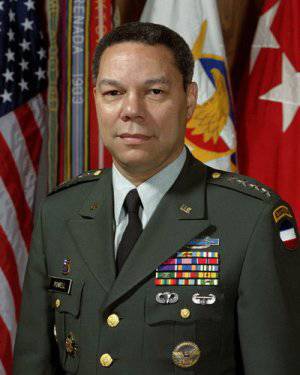 Powell agreed that the armed forces the size of the Cold War period will no longer be in demand. At the same time, the “looking beyond the horizon” general considered unacceptable the transformation of the armed forces only into an instrument of “peacekeeping”, into something like the “army of salvation”.
Powell agreed that the armed forces the size of the Cold War period will no longer be in demand. At the same time, the “looking beyond the horizon” general considered unacceptable the transformation of the armed forces only into an instrument of “peacekeeping”, into something like the “army of salvation”. Powell also took into account the fact of the prevalence of Democrats in Congress, who sharply criticized the Reagan administration’s unrestrained build-up of military potential, which inevitably should lead to the advancement of various, including “radical”, plans for the reduction of armed forces.
Conservatively-minded Powell civilian leaders, such as Secretary of Defense Dick Cheney, his deputy, Paul Wolfefitz, presidential adviser on national security issues, Brent Scowcroft, were not inclined to trust forecasts of a sharp reduction in the threat to the United States in the near future and oriented Powell towards reductions in the military budget no more than 10 percent over 1990 – 1995.
In order to please his “bosses,” the general presented a schedule of reductions of 5 percent each year during the same time interval. In accordance with this plan, it was envisaged to reduce the personnel of the armed forces from 3,3 million military personnel (2,1 million - in regular troops and 1,2 million - in national guard and reserve) to 2,5 million (1,6 - regular troops and 0,9 - national guard and reserve ). This was supposed to turn the armed forces of the country into “basic forces”, representing a reduced copy of the armed forces of the Cold War era and, most importantly, without carrying out any cardinal and “painful” transformations.
The project, developed by Powell at the direction of his superiors, implied that the armed forces possessed the ability to conduct military operations without reliance on allies with the enemy in the person of the states that now became designated by the term “rogue states”.
This concept envisaged the possibility of the participation of the United States in two major regional conflicts occurring at the same time (a bit later, “almost simultaneously”). It was assumed that in order to achieve victory in crisis regions, such as the Korean Peninsula or the Persian Gulf zone, there would be enough groups of 400 thousand troops each, even if the allies did not come to the rescue.
In addition, Powell and his team put forward a tough position, according to which the troops can be involved in hostilities only when, firstly, their political goals are clear and flawless, and secondly, the country's leadership is ready to use the armed forces quickly and decisively and, thirdly, the troops must be withdrawn from the zone of hostilities immediately after achieving their goal.
This situation was due to repeated failures of the American armed forces, such as in Vietnam (1962 – 1972) or Lebanon (1982 – 1983), where the goals of the political leadership were not clear and the troops were not given clear objectives. This provision later doomed the form of the so-called Powell Doctrine.
The draft reorganization of the armed forces, developed by General Powell, to the satisfaction of the military-industrial complex did not envisage abandoning the creation and modernization of key projects of armaments and military equipment.
For the ground forces, these are Comanche strike and reconnaissance helicopters; for the Air Force - the F-22 fighter, manufactured using stealth technology; for the Navy - a multi-purpose tactical aircraft F / A-18E / F, as well as aircraft carriers and destroyers of new projects CVN-72 and DDG-51, respectively.
Meanwhile, it was obvious that these expensive projects were clearly superfluous in the conditions of the dissolution of the Warsaw Pact and the disorganization of the USSR. And besides, because of their high cost, it was not possible, with the planned reductions in purchases (by 25 percent), to change weapons on a “one-to-one” basis.
And ministers are powerless
The victory of the United States in the war in the Persian Gulf zone (1991) over a relatively weak enemy in the person of Saddam's Iraq, according to many American experts, put an end to the plans of those "reformers" who wanted real transformations of the US military machine. Dominated by loud conservative declarations glorifying the success of the military reform of the Republican administration of the elder Bush.
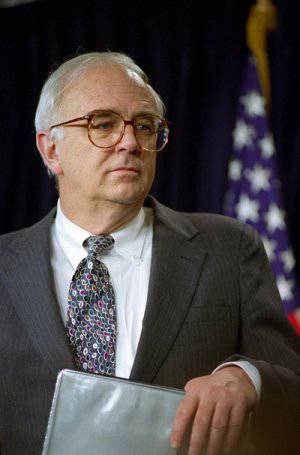 But the victory in the Arabian sands did not bring the expected dividends to the Republicans, who their opponents accused of “ill-conceived and fabulous spending of money for military needs” and “inability to save” in general. Due to these and, of course, a complex of other reasons, the Republicans were expecting a loss in the next presidential election.
But the victory in the Arabian sands did not bring the expected dividends to the Republicans, who their opponents accused of “ill-conceived and fabulous spending of money for military needs” and “inability to save” in general. Due to these and, of course, a complex of other reasons, the Republicans were expecting a loss in the next presidential election.Les Espin, who was nominated by Democrat Bill Clinton for the post of Minister of Defense, proposed his draft of military reforms. While occupying the post of chairman of the committee on the affairs of the armed forces in the House of Representatives during the Bush administration, Espin mercilessly criticized the Republicans for the half-heartedness of their steps.
The quintessence of his proposed project, known as the “Bottom-Up Review” (or, officially, the “Review of the State and Development of the U.S. Armed Forces for the Future”), was the idea that if the American leadership really plans to benefit from the more money spent on fighting the USSR than 10 trillion dollars, he should immediately take radical changes in the armed forces.
In accordance with his project, presented at the beginning of 1992, completely different armed forces should have been formed, saving a huge amount of 1993 billion dollars during the financial year 1997-231. The project has been approved.
Espin, and soon replacing him as minister, William Perry zealously got down to business, but did not succeed much. The fact is that General Powell continued to remain in the post of chairman of the committee of chiefs of staff and, by any means with the support of his supporters, "torpedoed" Espin-Perry's initiatives.
President Clinton, who lost prestige among the military elite because of his position on imposing permission for gays to serve in the armed forces, simply avoided helping the defense minister to “push” his project, greeted by the generals with hostility.
Adjusting Perry’s plans had to make a substantial adjustment to the initially ambitious project. First of all, the provision was reestablished on the need to maintain such a size of the armed forces that would allow the United States to participate simultaneously in two major regional conflicts.
As part of the naval forces, it was decided to leave the 12 carrier-assault groups that the Navy had during the Cold War. The Air Force "withdrawn" the order of 200 tactical fighters, but "added" the same number of strategic bombers, aimed at performing tactical tasks.
In the ground forces, two divisions were reduced, but the number of ground units in the national guard and reserve remained at the level of the cold war period. The marines even increased due to the formation of another expeditionary division.
The project did not affect Cold War relics - such as the Sivulf submarines, Trident-2 missiles, F-22 fighter jets, Milstar satellite communication systems ... Moreover, the Clinton administration agreed to continue to develop and supply for the needs of the marine corps V-22 Osprey "Osprey", which Minister Cheney from the previous Republican administration tried to annul. The personnel of the armed forces declined minimally - by 8 percent to 2,3 million, and defense expenditures by about 9 percent during the 1994 – 1998 fiscal period. The cost of acquiring new weapons remained at the same level.
Espina’s project did not satisfy anyone: neither conservatives nor liberals. The conservatives argued that due to the reduction in defense spending it would be impossible to wage two wars of the scale of a theater of war. They were also dissatisfied with the Clinton administration’s desire to concentrate on preparing troops for "operations below the level of war" - such as were carried out in Haiti or in Bosnia.
The liberals expressed dissatisfaction with the fact that Clinton "too little" cut the defense program of the Bush administration and, moreover, partially restored the defense funds initially reduced on his own initiative, going on about the republican-controlled congress. Indeed, out of the defense budget cuts planned by Clinton for 127 billion dollars, only 27 was actually “withdrawn”.
The “reformers” - supporters of cardinal transformations in the military sphere - generally stated the fact of the “unpreparedness of the US armed forces for waging fourth-generation wars”. As an argument, they cited an operation in Somalia in 1993, launched as a “humanitarian mission”, but then turned into a real military confrontation of the “next generation”. The American troops were absolutely unprepared for it and suffered a clear failure, having lost 18 people and two helicopters.
Congress takes over
The US Congress assessed the partially implemented projects of reforming the country's military machine as “not fully meeting the requirements of the new era,” and ordered the Pentagon to prepare a new document called the “Comprehensive (four-year) review of the state and development prospects of the armed forces”, and in parallel formed a national defense commission practically with similar tasks.
Looking ahead, we note the fact that neither the Pentagon nor the congress projects have become a breakthrough in the reform of the US armed forces. The Pentagon variant confirmed its adherence to the scenario of two wars, thus leaving the structure of the troops, plans for their modernization (restructuring) and readiness issues unchanged.
It was felt that Perry’s successor as secretary of defense in the Clinton administration, William Cohen (a former Republican senator), was not inclined, like President Clinton, to confront the generals and conservative congressmen.
At the same time, there was a thesis in the draft that the troops should prepare to participate in conflicts such as the Bosnian or Haitian ones. Further, the project postulated the thesis that the US should maintain “strategic deterrence” at the level of 7 thousand nuclear warheads before Russia ratifies the START-2 Treaty, and then reduce their number to 3,5 thousand.
And finally, supposedly proceeding from the “threats of an uncertain future,” the necessity of modernizing weapons was justified.
True, apparently, for the sake of the liberals in the Pentagon variant were offered some cosmetic reductions of personnel and equipment. So, it was planned to reduce regular troops by 4 percent, or 60 thousand people, reservists - by 6 percent, civilian employees - by 11 percent. The project proposed to reduce by 25 percent the previously planned purchases of F-22, F / A-18E / F and V-22.
The project of the commission of the congress was more “radical”. First, it was noted that the concept of two wars on a regional scale is a “tracing of the strategy of the Cold War and obliges to keep redundant groups of forces on the front line.
Secondly, the Pentagon criticized the draft committee for the fact that too much money was spent on “yesterday’s” weapons like tanks M1A1 Abrams and aircraft carriers of the Nimitz type.
Thirdly, the Pentagon was criticized for the lack of any concept of turning the national armed forces into "fully mobile" troops, as well as for lack of attention to unmanned aerial vehicles and "ahead of time" developments of reconnaissance and communication systems.
Fourth, as a summary, the commission’s project strongly recommended that the Clinton administration increase annual allocations for 5 — 10 billion dollars to fund research in the areas of intelligence, military space, developing the “Fight in the City” concept, to conduct “unified” (interspecific) experiments and the so-called information operations. This was to "transform the American military machine into the forces of the twenty-first century."
However, the generals categorically refused to support the congressional transformation project, in which Minister Cohen supported him.
Rumsfeld Fail
In the period of the next presidential campaign in the USA at the end of 1999, the Republicans put forward three theses of harsh criticism of previous projects of reforming national armed forces.
First, the Republicans stressed, Clinton and his team seriously underfunded the defense needs, which allegedly resembled the situation in the country at the end of the 1930s, which led to the “Pearl Harbor disaster”.
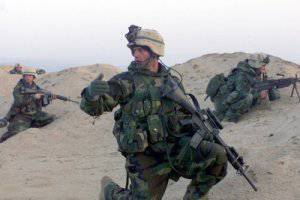 Secondly, the democrats allegedly “unbalanced the armed forces” by imposing all sorts of “humanitarian” and “stabilization” operations on them that the country's military machine was not ready to wage a “normal war” on a large scale in such crisis regions of the world as the Persian Gulf or the Korean Peninsula.
Secondly, the democrats allegedly “unbalanced the armed forces” by imposing all sorts of “humanitarian” and “stabilization” operations on them that the country's military machine was not ready to wage a “normal war” on a large scale in such crisis regions of the world as the Persian Gulf or the Korean Peninsula. And, thirdly, in the opinion of the Republicans, the Clinton administration could not take advantage of the obvious advantages of the “revolution in military affairs” to transform the armed forces into “mobile and flexible troops”.
These three theses of the Republican presidential candidate, George W. Bush, were voiced in their main keynote speech in December 1999. To fix the "catastrophic situation" Bush promised above all by increasing allocations for training troops for combat operations, and not for "operations below the level of war."
He also pledged to radically "transform" the country's military machine - even if he had to "jump across generations of technology."
At the same time, the term “transformation” was given a very significant context. This is a “process shaped by the changing nature of armed struggle, the growing interaction of individual components of the armed forces through new combinations of concepts, combat capabilities, people and organizations that use national advantages and protect the country from asymmetric threats to preserve the strategic position of the United States, which helps strengthen peace and maintain the necessary stability. "
Republicans offered to increase defense spending over 10 years by only 45 billion dollars, while their Democratic competitors in the struggle for the White House offered 80 billion for the same period. Apparently, not least these arguments contributed to the fact that the Republicans entered the White House in triumph.
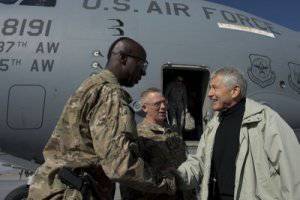 To guide the implementation of ambitious plans for the transformation of the US armed forces, the Republican elite picked the appropriate candidate - Donald Rumsfeld, who had extensive experience as a leader since the time when he headed the military department in the Ford administration in 1970-s, led the White House and was the US representative in NATO. Rumsfeld had a reputation and a successful manager, making the corporations he headed among the most prosperous. It seemed that the best candidate for the post of Minister of Defense could not be found.
To guide the implementation of ambitious plans for the transformation of the US armed forces, the Republican elite picked the appropriate candidate - Donald Rumsfeld, who had extensive experience as a leader since the time when he headed the military department in the Ford administration in 1970-s, led the White House and was the US representative in NATO. Rumsfeld had a reputation and a successful manager, making the corporations he headed among the most prosperous. It seemed that the best candidate for the post of Minister of Defense could not be found. Meanwhile, again looking ahead, we note that the results of Rumsfeld’s activities did not exceed in their effectiveness what its predecessors had “created”. The failures of Donald Rumsfeld were due to the following circumstances.
First, objectively, the minister found himself in a quandary, taking upon himself the mission of a radical restructuring of the work of the military department during a period of general euphoria from the awareness of the American establishment and the public of the status of his country as the "only superpower in the world". Under these conditions, it was extremely difficult for him to find supporters of a radical transformation of the armed forces.
Secondly, the authoritarian style of his leadership was clearly not suitable for solving such an ambitious task as the “transformation of the military machine of the country”, which, as American expert L. Korb writes, “requires certain flexibility and ability to get along with the powerful in order to break the resistance powerful bureaucracy of the world. " As head of the military department in January 2001, Rumsfeld immediately spoiled relations with the American generals, civil servants, senior representatives of the military-industrial complex and, most importantly, with those members of Congress from both houses, on whom the successful promotion of reform ideas depended.
Speaking 10 September 2001, that is, the day before the mega terrorist attacks in New York, Rumsfeld made a shocking statement: “Our main opponent is here, inside our house. This is the Pentagon bureaucracy! ”
Thirdly, Rumsfeld tried to force events, trying to transform the armed forces in the shortest possible time, unwittingly inflicting, as his ill-wishers said, irreparable damage to the military industry. In the first eight months of Rumsfeld’s work at the Pentagon, on his initiative, more than a dozen working groups were formed, which were committed to substantiating the need to reduce funds for almost all defense programs ...
As a result, by 2005, the country's defense budget grew by 40 percent, not counting the spending on the wars in Afghanistan and Iraq. Thus, Republican initiatives on austerity and their targeted use for the needs of “transformation” essentially failed, while the military-industrial complex continued massive supplies to the troops of the Cold War era.
Neither the president nor his entourage defended Rumsfeld, who at the end of 2006 had to resign.
Robert Gates - “a minister without“ ambitions ”
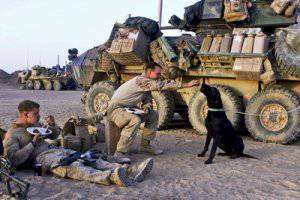 The new head of the US military, formerly director of the CIA, Robert Gates, was given a less ambitious task, which was to save defense spending against the backdrop of "the successful completion of military missions in Afghanistan and Iraq." For the two remaining before the election of the new president of the year, Minister Gates showed himself to be a subtle diplomat, establishing constructive relations with both legislators and representatives of the military-industrial complex, but without actually touching on a single “painful point” of the armed forces reforming process. .
The new head of the US military, formerly director of the CIA, Robert Gates, was given a less ambitious task, which was to save defense spending against the backdrop of "the successful completion of military missions in Afghanistan and Iraq." For the two remaining before the election of the new president of the year, Minister Gates showed himself to be a subtle diplomat, establishing constructive relations with both legislators and representatives of the military-industrial complex, but without actually touching on a single “painful point” of the armed forces reforming process. . Such a position of a non-ambitious minister, a representative of the Republican Party, clearly appealed to the new democratic administration, and Obama suggested Gates to continue the “balanced course” of saving defense spending, provided that the situation in Afghanistan and Iraq was finally reversed.
Under the new minister, the following important documents that directly related to national military construction were published or developed: "National Security Strategy" (2010), "Comprehensive Review of the State and Prospects of the US Armed Forces" (2010), "National Military Strategy" ( 2011 d.) And a paper with the eloquent title "Holding on to global American leadership. Priorities of military construction in the XXI century ", which was released in 2012 year.
In these documents, along with the paramount neutralization of threats to the United States coming from space and cyberspace, "turning into new environments of military confrontation," the traditional task of maintaining troop readiness to achieve victory over a "regional aggressor, whose military potential can be as powerful like Iran or North Korea ”(recall the concept of two regional-scale wars).
At this, Gates considered his mission accomplished and was asked to resign. According to the figurative expression of President Obama, "Minister Gates, having successfully established bridges between the two administrations, fulfilled the task assigned to him with honor."
The main thing is to save money
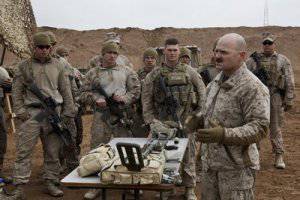 A new minister appointed by 1 on July 2011, who in the past also led the CIA, Leon Panetta was from the Democratic Party and was famous for having personally led the operation that, according to the official version, led to the death of Osama bin Laden.
A new minister appointed by 1 on July 2011, who in the past also led the CIA, Leon Panetta was from the Democratic Party and was famous for having personally led the operation that, according to the official version, led to the death of Osama bin Laden. As a man who was well-versed in budgetary matters, President Obama charged him with the “primary task” of ensuring a large-scale reduction in military spending on 400 billions of dollars over 12 years. It was a priori taken for granted that in the medium and long term (2015 – 2030) the operational capabilities of the American armed forces due to their release and even some build-up should remain sufficient to defeat any regional aggressor.
At the same time, focusing on a sharp increase in allocations for special operations forces with a general decrease in the military budget, the latest Pentagon documents emphasized the need to abandon further long-time operations by US forces requiring significant financial expenditures and fraught with great losses among military personnel and civilians. It was also proposed to more extensively involve allies and partners, involving them in coalition activities, including through the formation of “coalitions at will”.
However, Panetta, despite the hopes pinned on him, failed to complete the task before him, and in February 2013 was replaced by a representative of the Republican Party - Senator from Nebraska Charles (Chuck) Hagel.
The new minister, who had combat experience while serving in Vietnam in 1967 – 1968, was awarded with combat medals and having two wounds, met the requirements of a democratic administration not only because his appointment to an important post could potentially mitigate opposition from influential Republicans conservators.
It was also important that he fully shared the position of his new boss regarding the priorities of the defense policy, first of all with regard to saving money and organizing the smooth withdrawal of American troops from Afghanistan within the designated time frame (until the end of 2014).
Despite a certain negative attitude towards him by the pro-Israel lobby in connection with the desire of the candidate ministers to observe the balance of US interests in the Middle East, Hagel’s position on the need to implement the START-3 agreement, continue to develop and deploy missile defense systems around the world and others aspects of US military strategy found support in Congress, and his candidacy was approved.
But on the shoulders of the newly appointed minister, the previously unplanned mission of “initially undesirable” involvement of the US armed forces in events related to the crisis in the Middle East unexpectedly collapsed. Not being a strong supporter of the direct participation of the US military in yet another Vietnam, Hagel was still forced to adhere to the general guidelines of the American leadership to “subordinate the development of the situation to his control,” including, if necessary, using military force.
Time will tell whether Minister Hagel will be able to successfully complete the tasks assigned to him. However, today there are grounds for stating that the reformers' expectations regarding the fundamental transformations of the US military machine in the near future will not be justified.
First of all, for the successful implementation of any reform, in addition to a well-thought-out and comprehensively substantiated concept, excessive funds are needed, which are unlikely to be sufficient in the course taken by the current US administration for all-out savings and cuts in the military budget.
Nevertheless, the US military forces are still waiting for real changes in the field of defense as a consequence of the completion of the military campaign in Afghanistan. However, apparently, already under the next presidential administration, although theoretical and documentary preparation in this direction has already begun.
Information